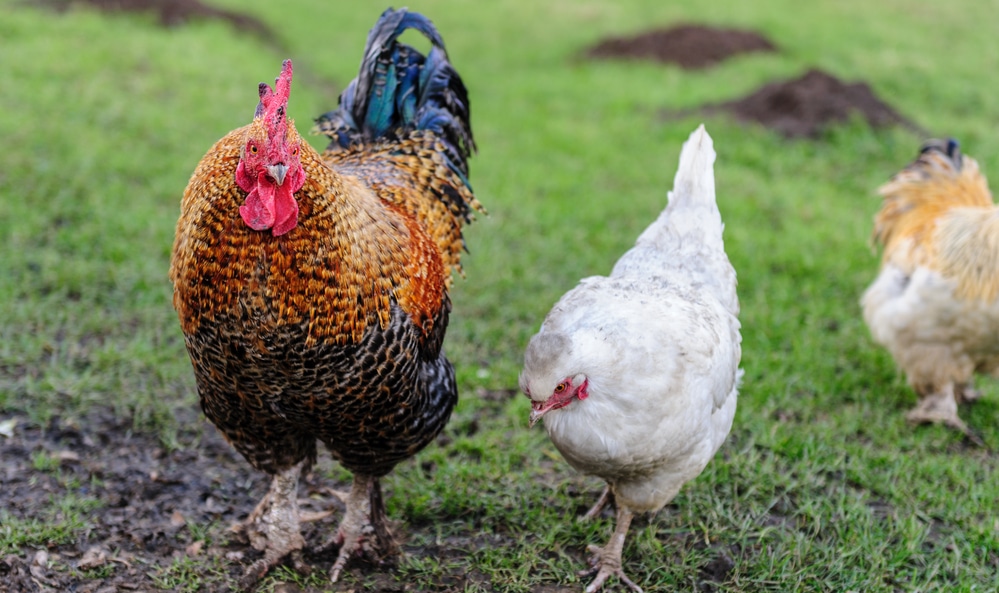Congratulations! It’s a boy. No, it’s a girl. Well, it’s a hen. I mean, it’s a rooster.
Hold on.
Slow down before you get yourself confused!
It’s easy to get wrapped up in the excitement of newly-hatched chicks. Whether you incubated your own eggs in your home incubator, let mama hen do the work for you, or ordered an adorable, peeping box of fluffiness from your favorite online hatchery, it can be difficult to tell the sex of a chick when it’s young.
In fact, it’s close to impossible – which is why many hatcheries offer generous refunds in case you receive a batch of incorrectly sexed chicks.
It’s a lot easier to learn how to tell a rooster from a hen when you are dealing with adult birds, but there are a few “hacks” you can implement in order to take some of the guesswork out of determining the gender of your flock member.s
Here are a few ways of learning how to tell a rooster from a hen.
Understand Chick Development
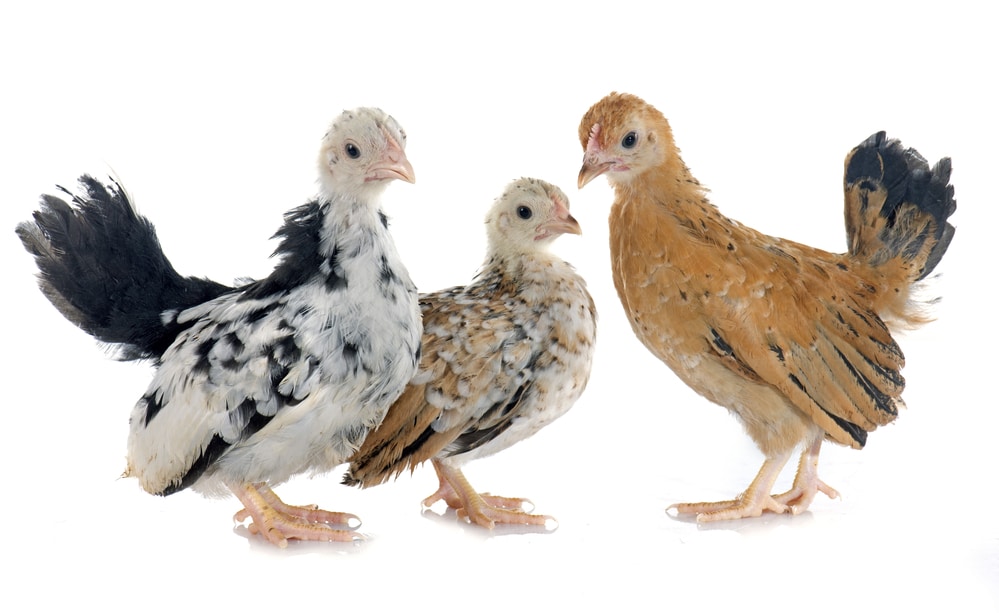
Before you can really get into the nitty-gritty of telling the difference between a rooster and a hen, you need to be aware of how and when a chick develops. This will give you a better idea of what to look for, and what to expect.
During the first week of life, chicks will be fluffy and covered with down. However, after the first week, you may notice some of the first feathers emerging. These will be small, and might not be noticeable until a little bit later. By week four or five, almost all of the dawn will be gone, replaced by those tiny, delicate feathers.
Starting at around week seven or eight, your chicks will undergo their first partial molt. They will then develop new feathers and begin to develop the pecking order within the flock. From about week five until week fifteen, your chickens will be in their most awkward stage.
Some people refer to it as the “teenager” stage while others regard it as the “dinosaur” stage – they look like miniature velociraptors, in fact! Either way, they’ll be quite entertaining to watch at this point, especially as you begin to notice their unique individual behaviors.
At week thirteen, your chickens will start to develop their adult feathers. As they reach weeks sixteen to twenty, you’ll be able to tell the difference between your hens and roosters if you haven’t been able to yet. Your pullets might begin to squat when you approach or pet them, and your cockerels may begin to crow.
There is some variation in these natural milestones, of course, with differences reliant on the individual chicken as well as the breed. However, this description should serve as a good general guideline of what to watch for in terms of development.
Before one year of age, all male chickens are referred to as cockerels. After one year, they become roosters. Female chickens are pullets before they become one year old, then become hens.
What Are Straight Run Chickens?
When you purchase chicks from a hatchery, you will have the option of purchasing either sexed or straight-run chicks.
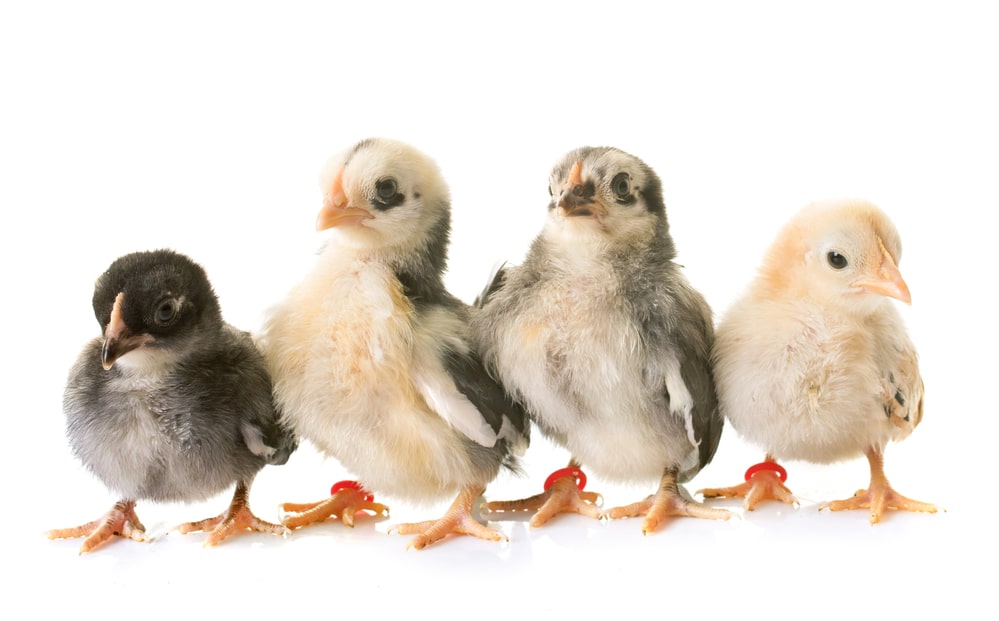
There are plenty of good reasons to want a flock of only hens or only roosters (or sexed birds, in other words). If you want to raise a flock of laying hens, a rooster isn’t going to be very helpful (because fertilization is not necessary for a hen to lay an edible egg). Similarly, if you are raising a flock of meat birds, roosters are almost always going to be more desirable because they will grow out more quickly.
But there are plenty of good reasons to purchase straight-run chickens, too. Straight run chickens are those that have not been sexed. Your odds of getting males or females is usually about 50/50 – the gender is completely unknown by the workers at the hatchery.
While sexing chicks is mostly reliable, keep in mind that the success rate for most methods of sexing is, at best, only 90%. That means for every ten chickens you get, there is a very strong chance that you’re going to get one of the wrong gender. Most hatcheries do have some insurance in place in case this happens so that you can get some of your money back if you receive too many birds of the wrong sex.
That being said, buying straight run chickens is almost always less expensive than buying sexed birds. This is because sexed birds are typically more in-demand, and the process of sexing chicks can be dangerous, so it’s not something that hatcheries want to do if they don’t have to.
How to Sex Chicks
There are several different methods you can incorporate to sex your chicks, some of which can be done at home but many of which are best left to the experts.
Vent Sexing
Vent sexing is a highly complicated process. In fact, to be a skilled chicken sexer, you must undergo extensive formal training. It might sound easy when you read about what it actually entails, but the fact of the matter is that it can be extremely dangerous.
When done incorrectly, vent sexing can cause serious injury or even death to the chicken. It’s important that you get the proper training if you want to learn how to vent sex your birds. It involves expelling feces from the cloaca of the bird so that you can see the unique sexual characteristics of the bird.
Keep in mind that, despite its high level of riskiness, vent sexing isn’t 100% accurate. Some of the best and most professional vent sexers still make mistakes, so really, it may not be the best bet when it comes to sexing your birds.
Sex Link Breeding
Sex link chickens are regarded as a more modern form of poultry sexing, but in fact, this method has been used for many, many years. First documented by Professor R.C. Punnet, this technique involves using the down color of chicks to determine their sex. Certain combinations of rooster over hen provided a definite marker for male or female- but it only works with certain breeds.
It also only works on first-generation sex links. Mating a sex link to a sex link will result in a less reliable determination of gender. However, it works well with breeds that have certain patterns and characteristics.
Black sex links, for example, are created as the result of breeding a solid-colored rooster over a barred female. You’ll get cockerels with white dots on their heads. This is often done with breeds that have cuckoo or barring patterns, like Barred Rocks or Dominiques.
There are other breeds, like Welsummers, in which chicks have dorsal stripes. Females have distinct lines and blotches that look like triangular patches, while the males have no head patch and lines that are less noticeable. These are referred to as autosexing breeds.
Feather and Wing Sexing
Often you can determine the sex of a chicken by looking at its wing feathers. This doesn’t work on all breeds, but in breeds where there is a decent amount of feather variation between roosters and hens, you may be successful. You’ll still have to wait a few weeks, though, as all chicks are born with down instead of feathers.
Other Old Wives Tales
Obviously, there are plenty of colloquial methods of sexing chickens that we could mention, too, but they aren’t in any way backed by science. It’s fun to be aware of, though! For example, people used to “predict” the sex of a chick by tying a needle to a piece of string. If the string went one way, it was female, if it went another, it was male.
How to Sex Chickens
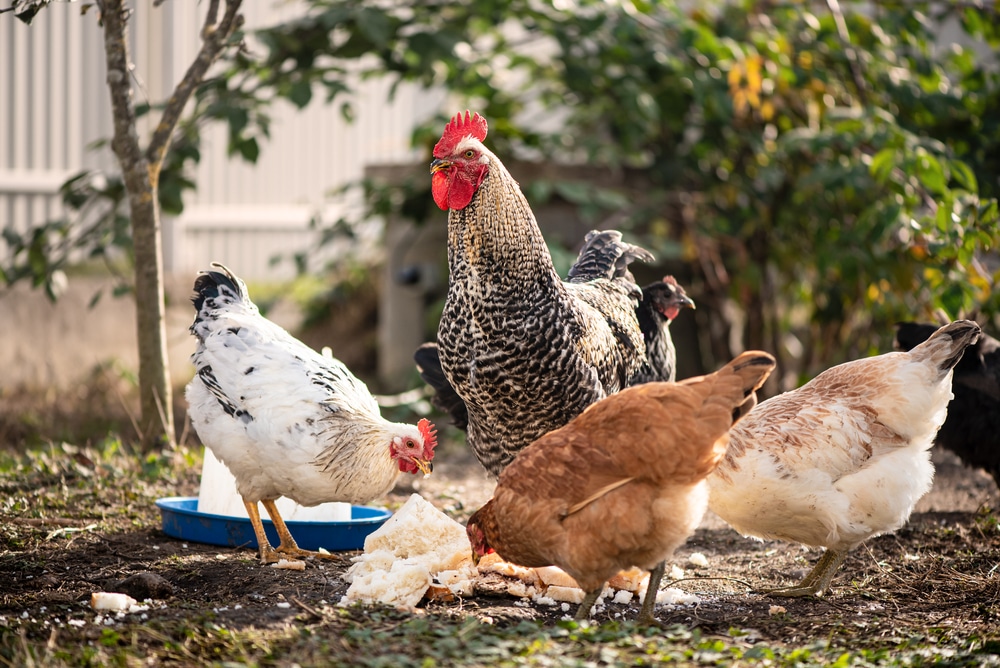
Sexing adult birds is much easier – and much more reliable – than sexing chicks. As long as you know exactly what to look for, sexing a full-grown chicken is simply a matter of gazing upon your flock.
After all, there are some pretty clear visual differences between roosters and hens – even people who haven’t been around chickens much can often tell the differences. Roosters are built to be noticed- after all, this is part of their evolution! Everything about a rooster is flashy, designed to both seduce his hens and also to deter predator attention away from the ladies (who are much less ornately dressed).
Here are some of the key differences between roosters and hens.
Combs and Wattles
Generally, rooster combs will be large, well-developed, and extremely red. Combs help showcase a rooster’s sexual maturity to the hens. More often than not, hens will gravitate toward roosters with large, vibrantly-colored combs. That’s because this is an indicator of health and wellbeing.
Roosters also usually have wattles that are much redder than those of the hens. This is also connected to his need to look strong and healthy for his ladies. Often, rooster combs and wattles become redder and more developed at an earlier age than those of the hens.
Hackles and Saddle Feathers
Both hens and roosters have hackles, but you’re not as likely to notice them on the females.
Hackles are feathers that cascade down onto the shoulders from the neck. They are differently shaped for hens than they are for roosters. While hens have hackle feathers that are long and rounded at the ends, roosters have feathers that are long and pointed. Many people describe the hackles on a rooster as a “mantle,” although this is much more pronounced in some breeds than in others.
Roosters tend to be more vibrantly colored, in general, than hens. Hens are more modest in their appearance so that they don’t stand out as vividly to predators.
Another key difference between roosters and hens is in the saddle feathers. Only roosters have saddle feathers. These start around the center of the back and are generally quite long and pointed. They tend to cascade down around the tail, providing a sleek overall appearance.
Tail Feathers
Most people have a much easier time identifying roosters by their tail feathers than by their hackles or saddle feathers.
Although hens have upright tails that are rounded and consist of feathers that are more or less all at the same length, roosters will have sickle feathers that look, as the name implies, much like a sickle. These grow upwards and outwards, curling over the tail for a waterfall-like cascading effect.
Feet and Legs
This characteristic can be difficult to notice until your chickens are quite old, with the reliability waning as your hens and roosters get extremely old. There is only a small period in which sexing by the feet and legs can be reliable.
However, roosters generally have feet and legs that are larger, stronger, and more robust than those of a hen. These legs tend to be thick and you might be able to see buds where the spurs will later develop even early on.
The evolutionary goal of the spurs is to project a demeanor of strength and good health. However, it’s worth noting that, while the spurs on a mature rooster will be quite pronounced, hens have the ability to grow spurs, too, especially as they get older.
Behavioral Differences
One of the easiest ways to determine whether your chickens are roosters or hens is to wait until certain behavioral characteristics emerge.
These aren’t 100% reliable, of course – some hens are markedly aggressive while some roosters are oddly docile. However, as a general rule of thumb, you can expect roosters to be more assertive and outgoing. They tend to lead the flock and will stand upright and hold their ground if the flock is threatened. They also tend to be more curious.
Hens are generally timider. If threatened or startled, they’re more likely to crouch down and stay quiet.
When your chickens start to feather out, you may notice that these behavioral differences emerge early on, but they are subtle. For instance, roosters tend to feather in a patchy manner while hens feather out more evenly.
Again, this is not true for all breeds or even all groups of chickens. If you have a flock comprised only of hens, keep in mind that one hen (or a few hens, depending on the size of your flock) will automatically take on a “rooster-like” position as the authoritarian of the flock. She may serve as a leader and round everyone up when there is a threat – just like a rooster would.
Of course, later on, you’ll notice some key differences in sexual behaviors. Hens, especially when there are no rooster present in the flock, will squat when you place your hand above them. This is a sign of sexual maturity. Of course, you can also tell you have a hen when she starts to lay eggs or exhibit broody behaviors!
You’ll know your rooster is, in fact, a rooster, when he begins to crow.
Potential Problems in Learning How to Tell a Rooster from a Hen
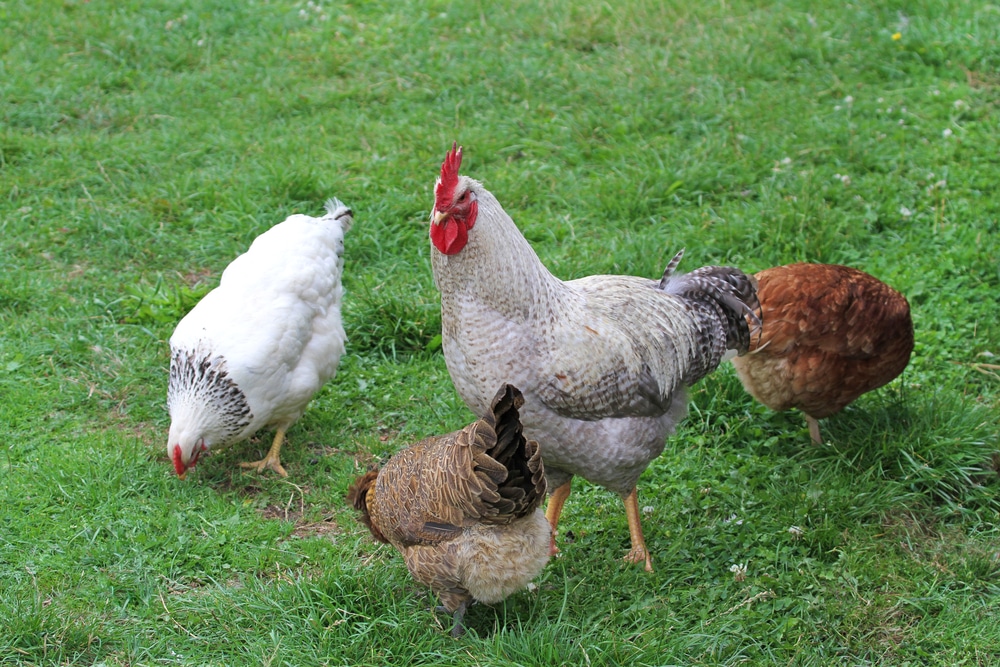
There are some breeds that are extremely difficult to sex. Some just don’t like to reveal their identities the right way, meaning it can be months or more before you can tell what is what.
For example, the Breda chicken is a unique fowl breed that is remarkably difficult to sex. It has no comb at all, and hens sometimes have wattles – roosters always do, though. They grow slowly and take plenty of time to showcase any notable sexual differences.
Really, the only reliable way to sex a Breda fowl is to wait until the saddle, sickle, and hackle feathers develop. That means it can be a minimum of six months before you know the difference between the hens and roosters!
Silkies are also though to sex – in fact, many breeders aren’t able to tell the difference between the roosters and the hens until the roosters begin to crow (and the females begin to lay eggs).
Some chicken breeds that are supposedly easy to sex include:
- Wyandottes
- Welsummers
- Cream Crested Legbars
- Buff Plymouth Rocks
- Light Sussex
- Any barred or cuckoo breeds
- Sex link chickens
Do You Need to Be Able To Know How to Tell a Rooster From a Hen?
Knowing how to tell the difference between a hen and a rooster is a valuable skill to have, but you shouldn’t lose sleep over trying to figure out the differences between the two before they are totally mature.
It will happen when it happens!
You can guess all you want, but really, the only 100% foolproof way to determine whether your chickens are hens or roosters is to wait until that first crow or that first egg. And unfortunately, that can be anywhere from 12-30 weeks of age.
Don’t fret, though – there are some breeds that mature earlier, as well as individuals who like to make their identities known very early in their lives.
Until then, try to be patient and just enjoy the fun chick and young adulthood-stages of your developing chickens. They’re only little once, right?
